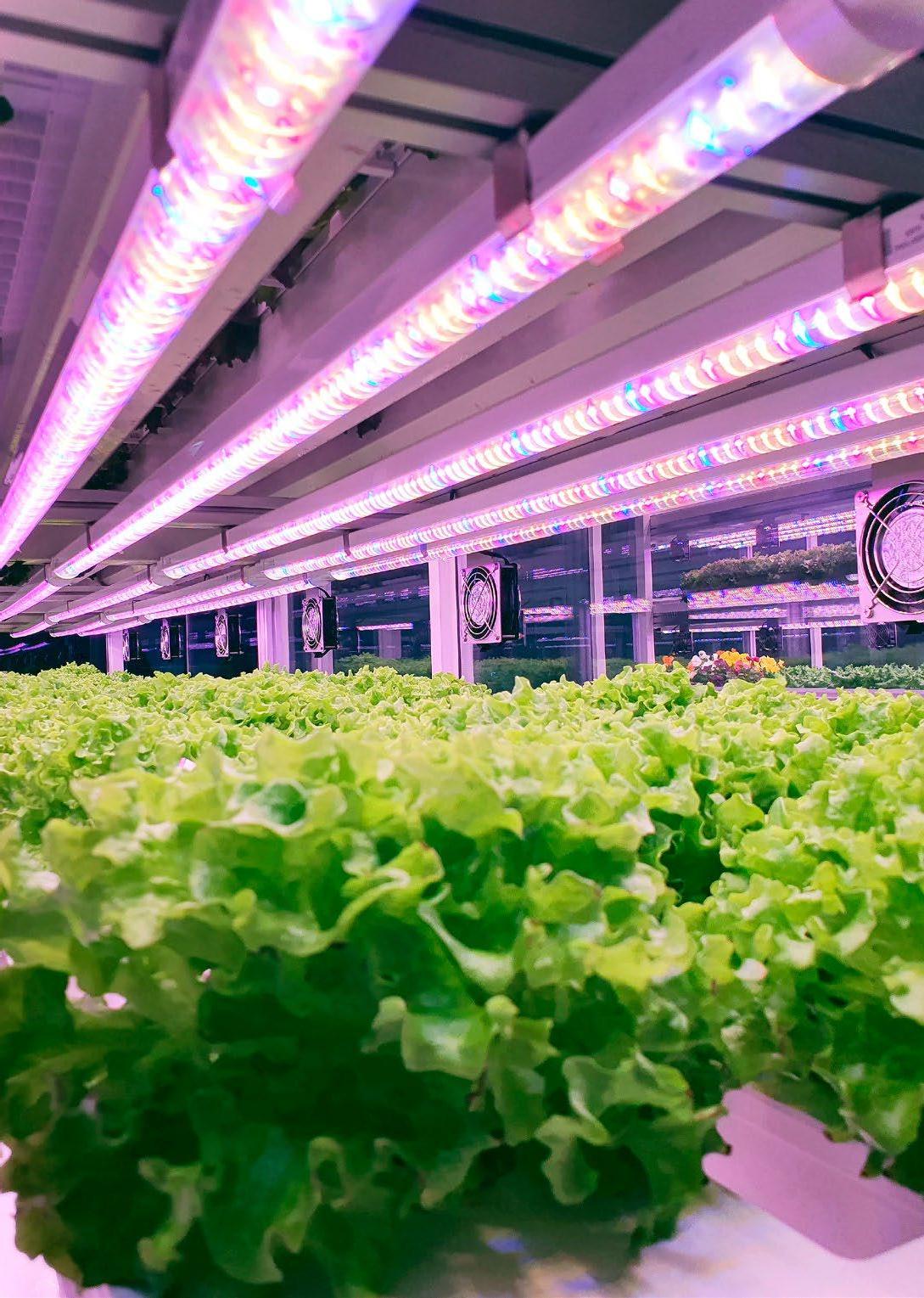
13 minute read
Reviving bioremediation options and sustainability: microbial-enhanced
Reviving bioremediation options and sustainability: microbial-enhanced biochar opportunities
Tony Gutierrez 1 and Frederic Coulon 2
Advertisement
1 School of Engineering and Physical Sciences, Heriot-Watt University, UK
2 School of Water, Energy and Environment, Cranfield University, UK
Soil provides multiple important functions such as the provision of food and raw materials, a platform for urban development and human well-being, and a filtering and transforming medium for water, nutrients and carbon. Functioning soils are necessary for ecosystem service delivery, climate change abatement, food and fibre production, and freshwater storage. Yet, key policy instruments and initiatives for sustainable development have not fully recognised how contaminated soils compromise the addressing of major challenges such as food and water security, biodiversity loss, climate change and energy sustainability. The presence of contaminated soils causes direct acute and chronic health risks, and limits effective land use for food production, living space and economic development.
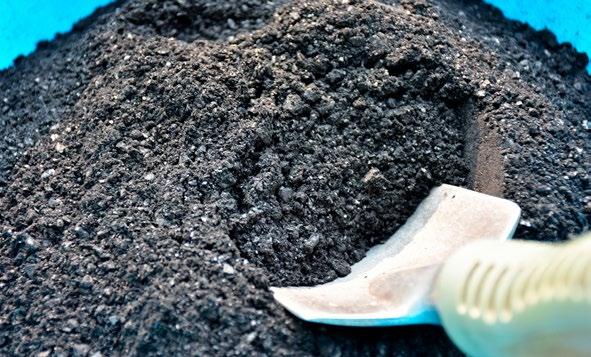
It is estimated that across the European Union, 350,000 sites are affected by soil contamination. The expectation is that this will continue growing with nearly 3 million polluting activities and estimates of the cost of treatment reaching €4.8 billion (EEA, 2015). In the UK alone, there are nearly 300,000 potentially contaminated sites with an economic value over £1 billion. Heavy metals, together with hydrocarbons, are the most frequent contaminants found at contaminated sites. Similarly, in other countries like China, the fast rate of urbanisation along with huge expansion of manufacturing industry has led to the emergence of significant soil and water contamination problems. In 2014, a national soil survey performed by the Chinese government concluded that up to 16% of all soils, and nearly 20% of all farmlands, were contaminated by organic and inorganic chemical pollutants. In India, recent economic development combined with poor environmental and waste management has also led to rapid land-use change and the emergence of significant soil and water contamination and brownfield problems across the country.
Over the past 20 years there has been an increasing drive towards more sustainable treatment-based solutions for contaminated land management as opposed to removal or containment actions, or ‘intensive’ treatments with high requirements for onsite infrastructure, energy and resource use. This has led to the emergence of very successful in situ bioremediation treatments. However, the complexities of both soils and the chemical hazardous mixtures encountered tend to affect the application spectrum and efficiency of bioremediation. Further to this, most of the current bioremediation systems and approaches for treating contaminated soil do not satisfy the end-user needs in terms of efficiency, sustainability and/or cost-effectiveness. Such technologies rely on physical, chemical or bio-based methods, the former two of which are generally prohibitively expensive, whereas all are either non-site-specific, do not work or are quite slow. Thus, the requirement to make contaminated land fit for use places a large economic burden on stakeholders, and there is a pressing need for knowledge, products and new
technologies that can remediate such land rapidly, cost-effectively and sustainably. In this respect, pyrolysis of a range of waste feedstock sources to produce biochar to apply to contaminated and degraded soils could be one of the means to tackle these problems. It further holds huge potential to be developed into an effective agent to treat contaminated land.
Biochar has been extensively studied as a soil amendment to enhance soil quality, crop production and to enhance the bioremediation activities of autochthonous populations of soil microbes for treating contaminated soils. However, research on biochar has not progressed much further than observing what happens within the soil, the rhizosphere and to crops during and after its application. Studies testing pre-inoculated biochar with specific microbes/consortia to treat polluted soils have shown promising results, but such studies are very few, and any consideration to match specific microbes with the properties of biochar is still in its infancy.
Biochar is the carbon-rich product of the thermochemical conversion of biomass, such as wood, manure, sewage sludge or organic wastes, in an oxygen-depleted
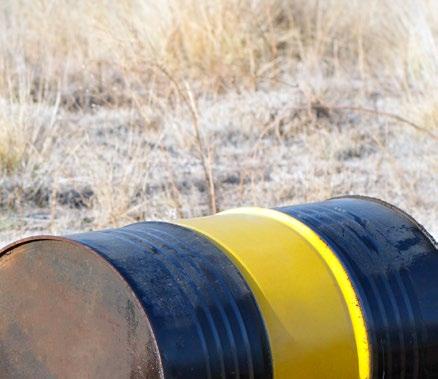
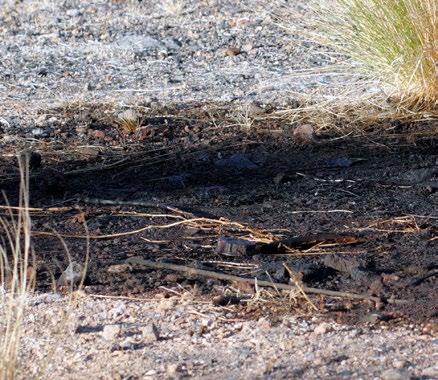
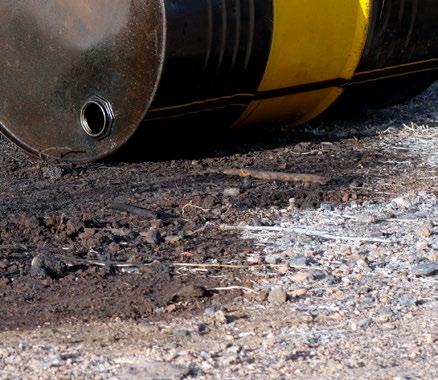
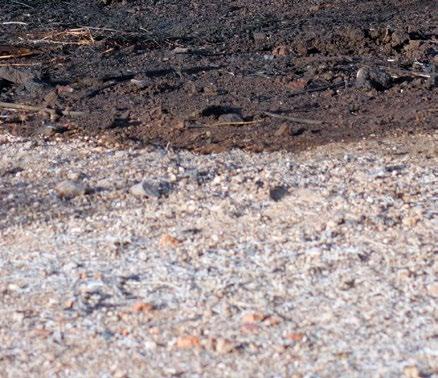
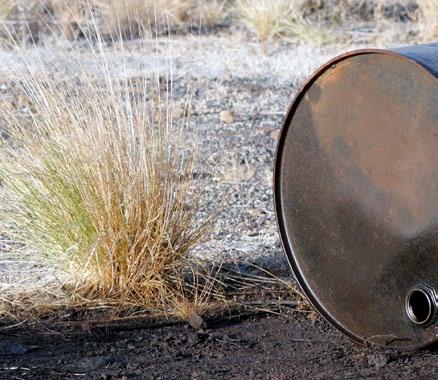
environment. On average, 50 metric tonnes (Mt) of biomass feedstock suitable for biochar production is available in the UK each year, which includes crop, wood and forestry residues, and animal and biodegradable municipal waste. Additionally, there is a significant volume of sewage sludge produced by wastewater treatment plants estimated at 10 Mt (dry weight) in the EU annually. Biochar from the pyrolysis of such waste materials for use in the remediation of contaminated soil can offer other major beneficial impacts, such as: (i) a climate change mitigation technology because it acts as a carbon sink; (ii) it can be used as a crop yield enhancer, such as a nutrient supply/growth medium directly to the plants or indirectly to rhizospheric microbes; (iii) it can provide co-benefits in saving water and (iv) it substitutes for fossil fuels used in the production of other soil-improving agents.
The current situation of contaminated soil might appear bleak, but it does present us with an exciting opportunity for biochar as a combined resource-recovery and remediation strategy, which can drastically reduce future remediation costs and reclaim valuable land, while at the same time unlocking billions of tonnes of valuable resources contained within these waste streams, improving the local environments and welfare and therefore contribute to progress on several sustainable development goals.
Bioremediation via active microbes pre-inoculated onto biochar can be viewed as a complete delivery package to soil as it contains the cell machinery (i.e. the microbes) that degrades/detoxifies the pollutants and nutrients (provisioned by the biochar) needed to support the microbes. Biochar also provides a surface carrier-support allowing the direct adsorption of the pollutant molecules into its inner pores, which is believed to favour electron transfer with the microbial cells and thus acting as an electron shuttle that accelerates pollutant degradation/ detoxification. Pre-inoculated biochar can thus be regarded as more favourable for remediation compared with amendment of soil with non-inoculated biochar as the latter relies on the presence of bioremediation-active microbes in the soil and their interaction with the biochar. However, the variability in the physicochemical and functional properties of different biochars can make matchmaking them with the microbial degraders unreliable and their subsequent use in soil remediation unpredictable. Therefore, future progress in biochar development is expected to centre around ‘tuning’ the properties for tailored bioremediation applications.
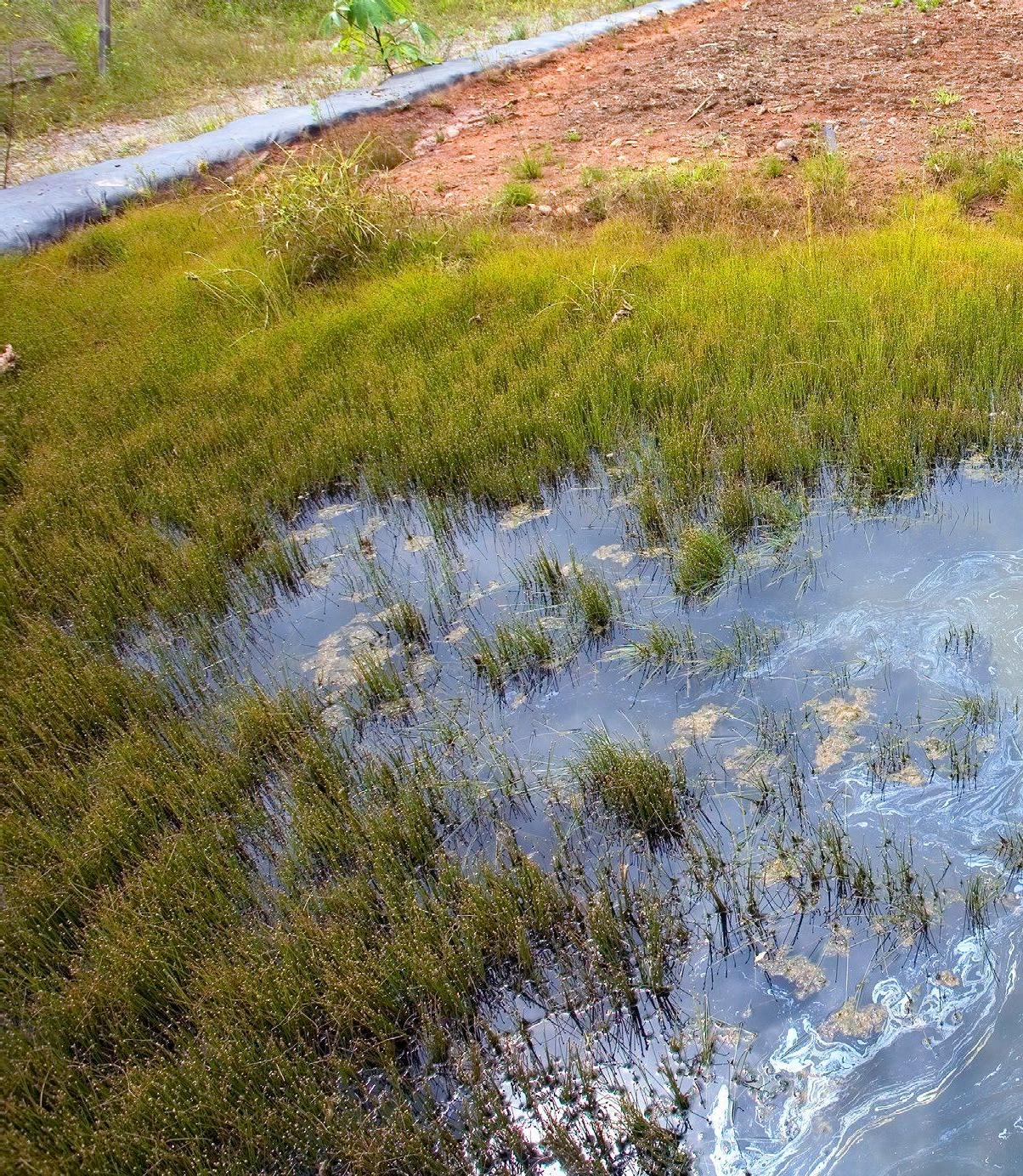
Further study is also needed to critically examine the role of microbes in soil remediation and mineralisation processes. Although the combination of functional microbes and biochar amendment has been shown as a promising technology for the green and sustainable remediation of contaminated soils, there is currently a disconnect between our understanding of the contaminant removal processes at the laboratory scale versus the field scale, and therefore future work should seek to bridge this gap by incorporating current knowledge into design considerations and monitoring system performance over multiple years. Moreover, the lifetime of the biochar-augmented medium is another remaining knowledge gap. While media composition can be manipulated to maximise sorption capacity, our understanding of the effects of weathering under actual environmental conditions on long-term performance degradation is particularly lacking. Therefore, field studies that monitor long-term performance are warranted. This will require interdisciplinary efforts among researchers in chemistry, microbiology, engineering and technology as well as collaborations between researchers and practitioners to ensure effective implementation of this technology into broader practice.
FURTHER READING
Bianchini A, Bonfiglioli L, Pellegrini M, Saccani C. Sewage sludge management in Europe: a critical analysis of data quality. International Journal of Environment and Waste Management 2016; 18(3), 226
Coulon F, Jones K, Li H, Hu Q, Gao J, Li F et al. China’s soil and groundwater management challenges: lessons from the UK’s experience and opportunities for China. Environment International 2016; 91, 196–200
European Environment Agency. Progress in management of contaminated sites.
https://www.eea.europa.eu/data-and-maps/indicators/ progress-in-management-of-contaminated-sites-3/ assessment
Houses of Parliament. Biochar, POSTNOTE 358, July 2010
https://www.parliament.uk/documents/post/postpn358biochar.pdf
Oliveira FR, Patel AK, Jaisi DP, Adhikari S, Lu H, Khanal SK. Environmental application of biochar: current status and perspectives. Bioresource Technology 2017; 246, 110–122
Tóth G, Hermann T, Szatmári, Pásztor L. Maps of heavy metals in the soils of the European Union and proposed priority areas for detailed assessment. Science of the Total Environment 2016; 565, 1054–1062
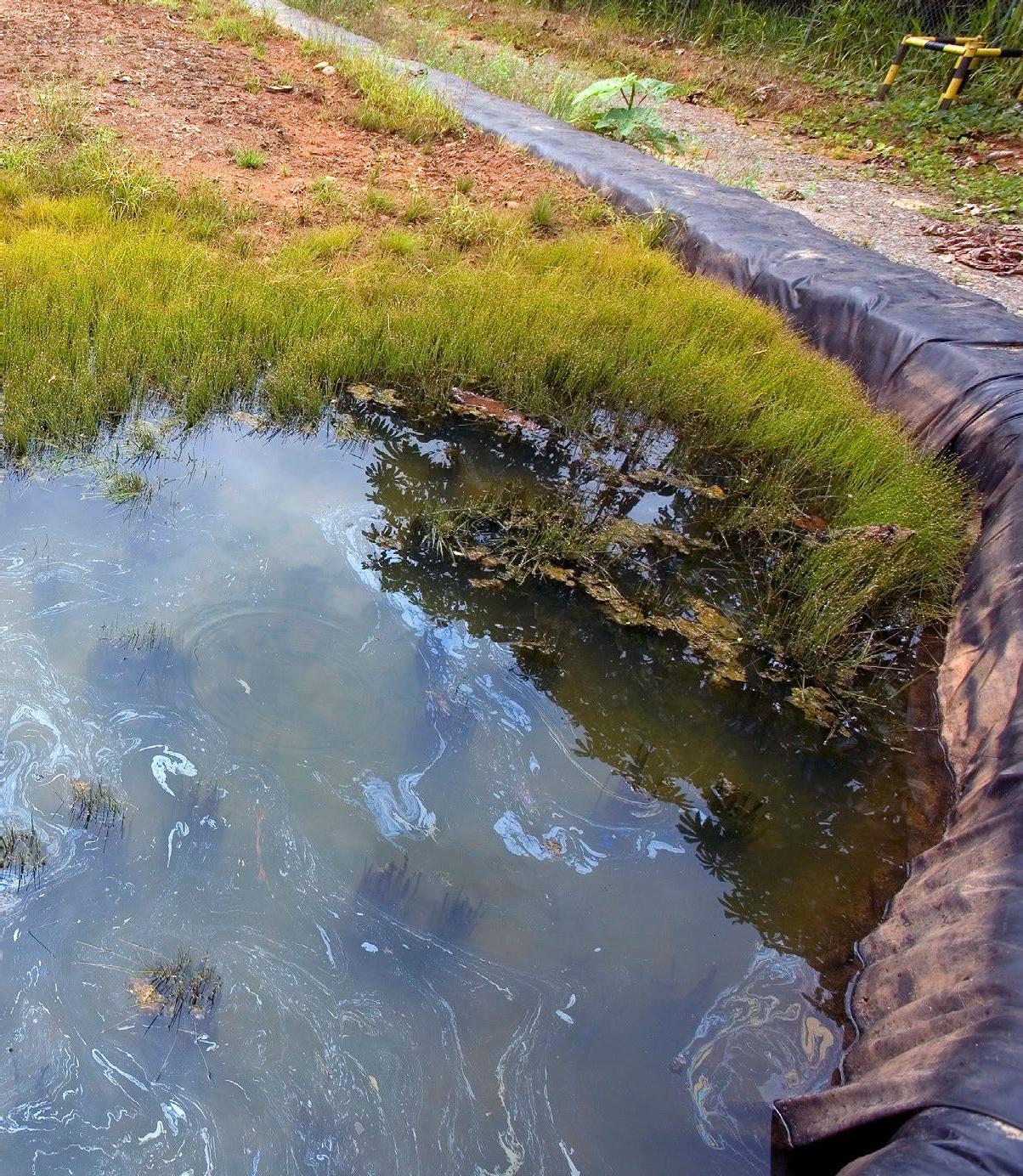

Looking to the future – vertical farms & food safety
Elliot Erskine
The James Hutton Institute, UK
Understanding and advancing food safety is critically important to reduce the morbidity and mortality associated with foodborne disease. The World Health Organization (WHO) estimates that each year, 33 million avoidable deaths are attributable to unsafe food and that one-third of these deaths are in the under-5 age group (https://www.who.int/activities/estimating-the-burden-offoodborne-diseases).
It can be extremely difficult to trace an outbreak of foodborne disease to a common foodstuff. The usual suspects include meat, eggs, fish and shellfish; however, increasingly, outbreaks of foodborne illness are associated with leafy greens, chopped salads and herbs; a recent Centers for Disease Control (CDC) investigation implicated leafy greens in up to 22% of US outbreaks (https://wwwnc.cdc.gov/eid/article/19/3/11-1866_article).
Contamination of leafy greens with foodborne pathogens can occur during crop production, processing or by consumers themselves (e.g. cross-contamination in the kitchen). During processing, bacterial contamination is often found in the water used to wash the produce, as well as on shredders, knives and conveyor belts. During production, sources of foodborne pathogens include improperly sanitised water used for irrigation, nearby livestock leading to faecal contamination of water or onto crops directly, as well as poorly composted manure soil amendments used too close to harvest time. Worker hygiene can also be an important factor, both during production and during processing. Using pathogen detection data and growth dynamics in predictive modelling can provide insight into the overall risk of foodborne illness to consumers from the food grown. Following the impact of the COVID-19 emergency response and with the increasing threat of climate change and water restriction, securing a local food supply is now high on the agenda for both international companies and governments. Some are turning to vertical farming to meet demand. Vertical farms have no standardised design, comprising any combination of sensing technologies, internet-of-things connectivity, robotics, controllable LED light recipes, water recycling, hydroponics and climate control. The smaller footprint of land required makes such vertical farms suitable for industrial or urban centres – bringing production closer to the consumer. The drawback of such facilities is in the energy requirements. The cost of electricity can be partially offset by the integration of renewable sources of energy and the high costs by selective choice of crops. Ideally, crops are chosen to grow quickly with reproducibly high quality and high market value. Thus, the focus of many vertical farming facilities is production of leafy greens and herbs.
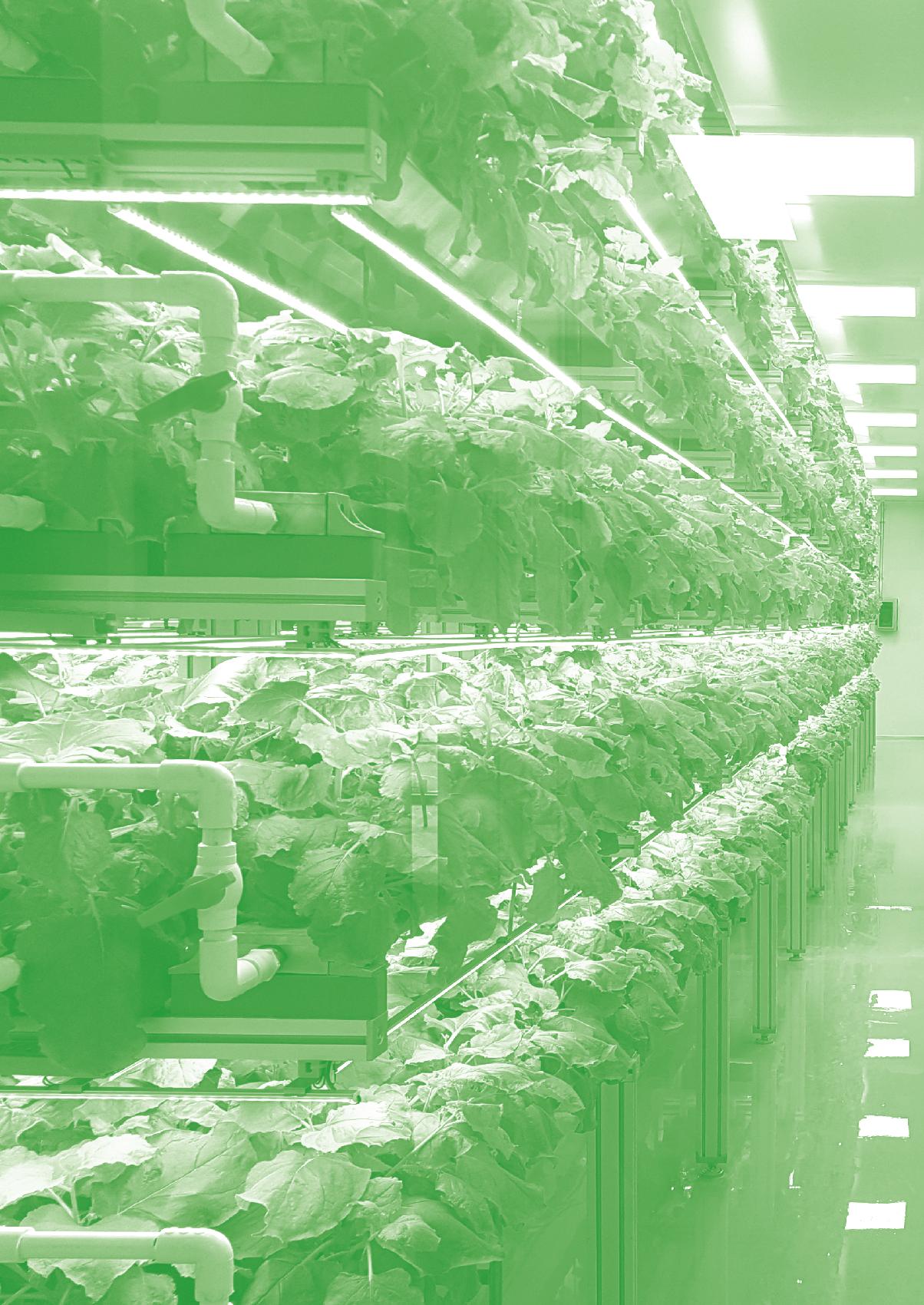
Benefits of a vertical farm from a food safety perspective include decreased supply chain complexity and shorter distance from production to consumer (with year-round production and reduced time to harvest), so following produce from farm to fork is much simpler and tracing of foodborne illnesses can be improved. There is also low-to-no risk of faecal contamination of crops by ruminants, a higher degree of control over water supply and reduced human handling of produce. However, these systems are still beholden to some of the same hazards as their lower tech counterparts – the microbial load of substrate, biofilms on surfaces, irrigation water contamination, seed contamination, poor sanitation, poor processing and handling protocols.
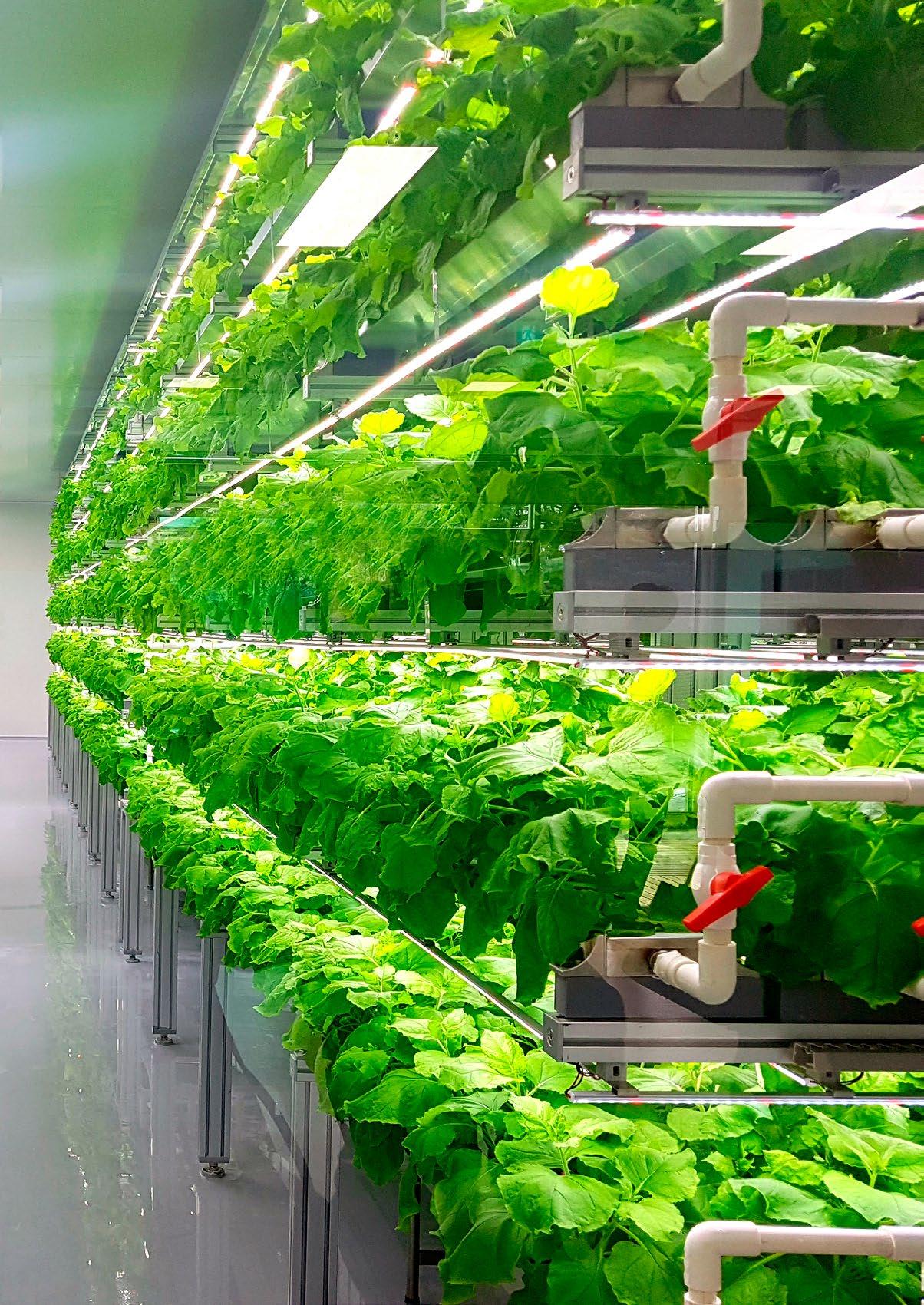
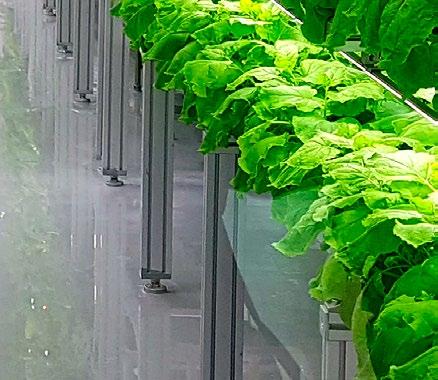
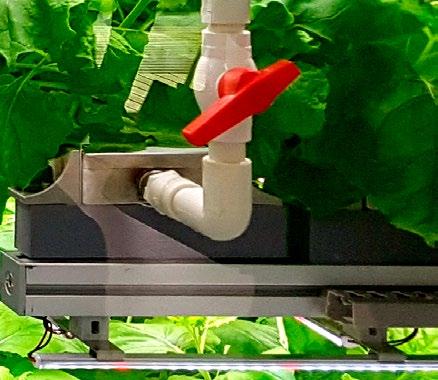
The 16th century Dutch philosopher Desiderius Erasmus is attributed with the saying “Prevention is better than cure”. Vertical farms, by their very nature, enable a strategy of prevention. By the introduction of full robotic control, the human element is minimised – reducing the chance of human transmission of faecal pathogens to crops. The isolation of water sources from farm run-off and the treatment of irrigation water to a potable standard, as well as the opportunity to control how watering is performed (i.e. watering from below rather than overhead) minimises the chance of a waterborne pathogen reaching the edible portion of the plant. The use of abiotic substrates (including vermiculite, rockwool and phenolic foam flotation) in hydroponics can decrease the microbial load and thus reduce the risk of pathogen influx into the tray environment. The detection of pathogens in the irrigation inflow and outflow water can be used to monitor through classic molecular detection via PCR, culturing or through functionalised antibody detection in lateral flow devices (e.g. ‘dipsticks’ and other point-of-need devices).
In the future, with the popularisation of portable third-generation sequencing technologies such as the Oxford Nanopore, the entire baseline microbial community metagenome could be sequenced on-site at a vertical farm. The monitoring and modulation of the microbiome by the introduction and manipulation of communities in the substrate or associated with the plants, is a growing field of study and testing is well suited to high-throughput vertical farming. Machine learning could also be used in automatic modelling of risks to the consumer based on large datasets collected on-site from various sensor technologies. The possibility for the detection of pathogens in situ is rapidly advancing, with the functionalisation of beads with antibodies in microfluidic devices. Vertical farming addresses some of the common food safety issues associated with field-grown produce but there are still unanswered questions for the future of this emerging technology.
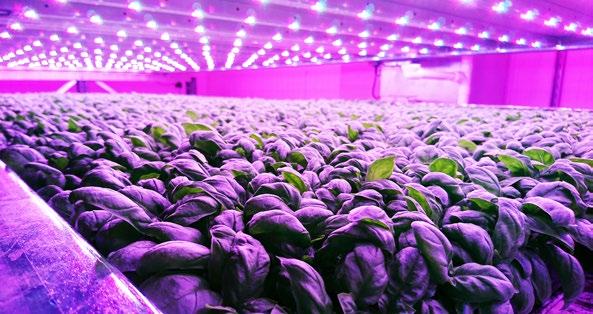

FURTHER READING
Buchholz AL, Davidson GR, Marks BP, Todd ECD, Ryser ET. Quantitative transfer of Escherichia coli O157:H7 to equipment during small-scale production of fresh-cut leafy greens. Journal of Food Protection 2012; 75(7), 1184–1197. doi: 10.4315/0362-028X.JFP-11-489
Castro-Ibáñez I, López-Gálvez F, Gil MI, Allende A. Identification of sampling points suitable for the detection of microbial contamination in fresh-cut processing lines. Food Control 2016; 59, 841–848. doi: 10.1016/J. FOODCONT.2015.07.004
Castro-Ibáñez I, Gil MI, Allende A. Ready-to-eat vegetables: current problems and potential solutions to reduce microbial risk in the production chain. LWT – Food Science and Technology 2017; 85(B), 284–292. doi: 10.1016/J. LWT.2016.11.073
Iwu CD, Okoh AI. Preharvest transmission routes of fresh produce associated bacterial pathogens with outbreak potentials: a review. International Journal of Environmental Research and Public Health 2019; 16(22), 4407. doi: 10.3390/ijerph16224407
Monaghan JM, Augustin JC, Bassett J, Betts R, Pourkomailian B, Zwietering MH. Risk assessment or assessment of risk? Developing an evidence-based approach for primary producers of leafy vegetables to assess and manage microbial risks. Journal of Food Protection 2017; 80(5), 725–733. doi: 10.4315/0362-028X.JFP-16-237
Roberts JM, Bruce TJA, Monaghan JM, Pope TW, Leather SR, Beacham AM. Vertical farming systems bring new considerations for pest and disease management. Annals of Applied Biology 2020; 176(3), 226–232. doi: 10.1111/aab.12587
